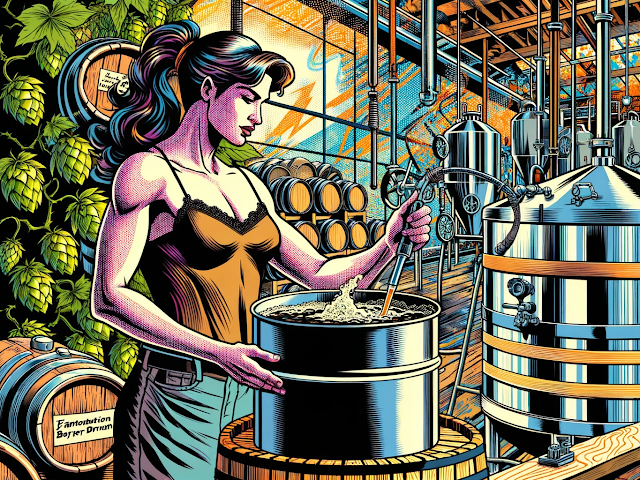The journey of beer from its inception as a humble mixture of water, malt, hops, and yeast into a delightful beverage that graces our tables is a fascinating process.
A crucial stage in this journey involves the primary fermentation, where yeast begins its diligent work of converting sugars into alcohol and carbon dioxide, giving beer its characteristic flavors and effervescence.
The duration that wort (the sweet liquid extracted from the mashing process of brewing beer) can be left in the primary fermenter is a topic that merits a detailed exploration, as it influences not only the flavor, aroma, and clarity of the beer but also its overall quality and stability.
The truth is, as long as the wort is infection free, you can leave your beer wort in the drum for months.
Understanding Primary Fermentation
Primary fermentation is the initial phase where yeast is most active, vigorously consuming the available sugars to produce alcohol, carbon dioxide, and various flavor compounds. This phase typically sees the most dramatic changes in the beer, including the bulk of alcohol production.
The environment within the primary fermenter is dynamic, with temperature and the yeast strain playing pivotal roles in the fermentation kinetics.
Factors Influencing Fermentation Duration
- Yeast Strain: Different strains of yeast have varying rates of metabolism, affecting the speed and efficiency of fermentation. Ale yeasts, for example, tend to work faster at warmer temperatures than lager yeasts, which operate more slowly at cooler temperatures.
- Temperature: The fermentation temperature can significantly impact the yeast's activity level. Warmer temperatures accelerate fermentation, while cooler conditions slow it down. However, extreme temperatures can either kill the yeast or cause it to produce undesirable off-flavors.
- Original Gravity (OG) of the Wort: The sugar content of the wort, indicated by its original gravity, dictates the potential alcohol content of the beer. Higher OG worts provide more fermentable sugars, requiring a longer fermentation time for the yeast to process these sugars fully.
- Nutritional Content: Adequate nutrients are essential for healthy yeast growth and fermentation. A lack of nutrients can stress the yeast, leading to a prolonged or stuck fermentation.
Optimal Time Frames for leaving beer wort fermenting
- Ale Fermentation: Ales, fermented at warmer temperatures (typically between 18°C to 24°C or 64°F to 75°F), usually complete primary fermentation within 1 to 2 weeks. This timeframe allows for the bulk of fermentation to occur, with the yeast settling down as activity decreases.
- Lager Fermentation: Lagers, which ferment at cooler temperatures (around 7°C to 13°C or 45°F to 55°F), may require a longer period in the primary fermenter, often 2 to 3 weeks, due to the slower metabolism of lager yeast strains.
Extended Primary Fermentation: Pros and Cons
An extended stay in the primary fermenter can have both benefits and drawbacks, depending on various factors such as the beer style, the specific yeast strain, and the brewer’s goals.
Advantages:
- Maturation: Longer primary fermentation periods can allow for the maturation of flavors, as yeast continues to metabolize certain compounds, leading to a smoother, more rounded beer.
- Clarity: Extended time can help in the settling of suspended particles, improving the beer's clarity without the need for filtration or fining agents.
Disadvantages:
- Autolysis: There is a risk of yeast autolysis, where yeast cells die and break down, releasing off-flavors, if the beer is left too long in the primary fermenter. However, this is more of a concern in commercial brewing or when using very large volumes.
- Staling: Over time, beer can be susceptible to oxidation, even in the anaerobic environment of a sealed fermenter, potentially leading to staled flavors.
Conclusion
In the world of homebrewing, flexibility and personal preference often dictate the exact duration beer remains in the primary fermenter.
While 1 to 3 weeks is a common guideline, the specific characteristics of the beer being brewed, the conditions of fermentation, and the desired end product quality all influence the optimal timeframe.
Brewers might choose to experiment within these parameters to discover what works best for their particular setup and taste preferences, always mindful of the delicate balance between allowing sufficient time for fermentation and maturation, and the potential risks of extended fermentation periods.



